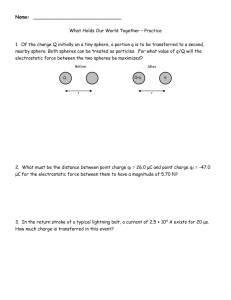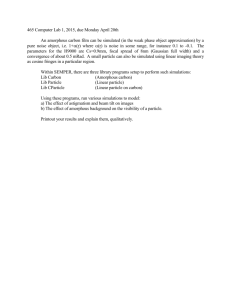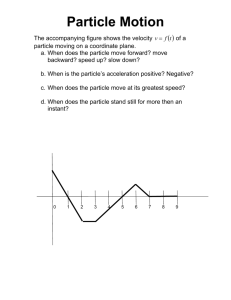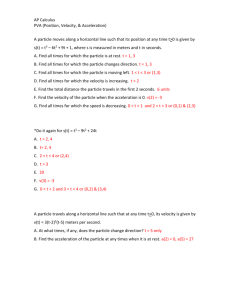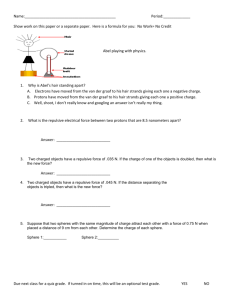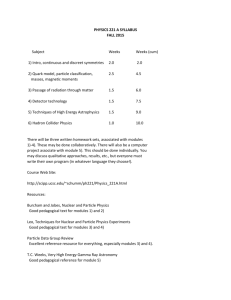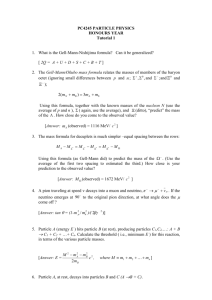Answers
advertisement
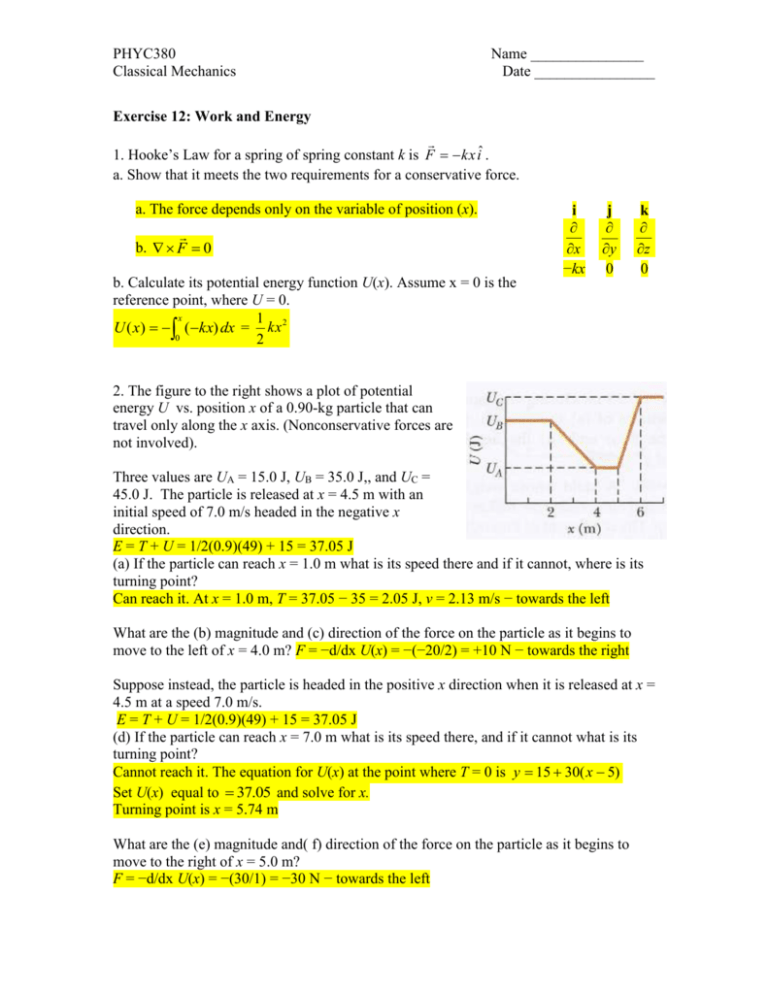
PHYC380 Classical Mechanics Name _______________ Date ________________ Exercise 12: Work and Energy 1. Hooke’s Law for a spring of spring constant k is F kx iˆ . a. Show that it meets the two requirements for a conservative force. a. The force depends only on the variable of position (x). b. F 0 i x −kx j y 0 k z 0 b. Calculate its potential energy function U(x). Assume x = 0 is the reference point, where U = 0. x 1 U ( x) ( kx) dx = kx 2 0 2 2. The figure to the right shows a plot of potential energy U vs. position x of a 0.90-kg particle that can travel only along the x axis. (Nonconservative forces are not involved). Three values are UA = 15.0 J, UB = 35.0 J,, and UC = 45.0 J. The particle is released at x = 4.5 m with an initial speed of 7.0 m/s headed in the negative x direction. E = T + U = 1/2(0.9)(49) + 15 = 37.05 J (a) If the particle can reach x = 1.0 m what is its speed there and if it cannot, where is its turning point? Can reach it. At x = 1.0 m, T = 37.05 − 35 = 2.05 J, v = 2.13 m/s − towards the left What are the (b) magnitude and (c) direction of the force on the particle as it begins to move to the left of x = 4.0 m? F = −d/dx U(x) = −(−20/2) = +10 N − towards the right Suppose instead, the particle is headed in the positive x direction when it is released at x = 4.5 m at a speed 7.0 m/s. E = T + U = 1/2(0.9)(49) + 15 = 37.05 J (d) If the particle can reach x = 7.0 m what is its speed there, and if it cannot what is its turning point? Cannot reach it. The equation for U(x) at the point where T = 0 is y 15 30( x 5) Set U(x) equal to 37.05 and solve for x. Turning point is x = 5.74 m What are the (e) magnitude and( f) direction of the force on the particle as it begins to move to the right of x = 5.0 m? F = −d/dx U(x) = −(30/1) = −30 N − towards the left




